Commentary: Targeted in El Paso, vilified by Trump. Why the Latino culture vacuum is dangerous
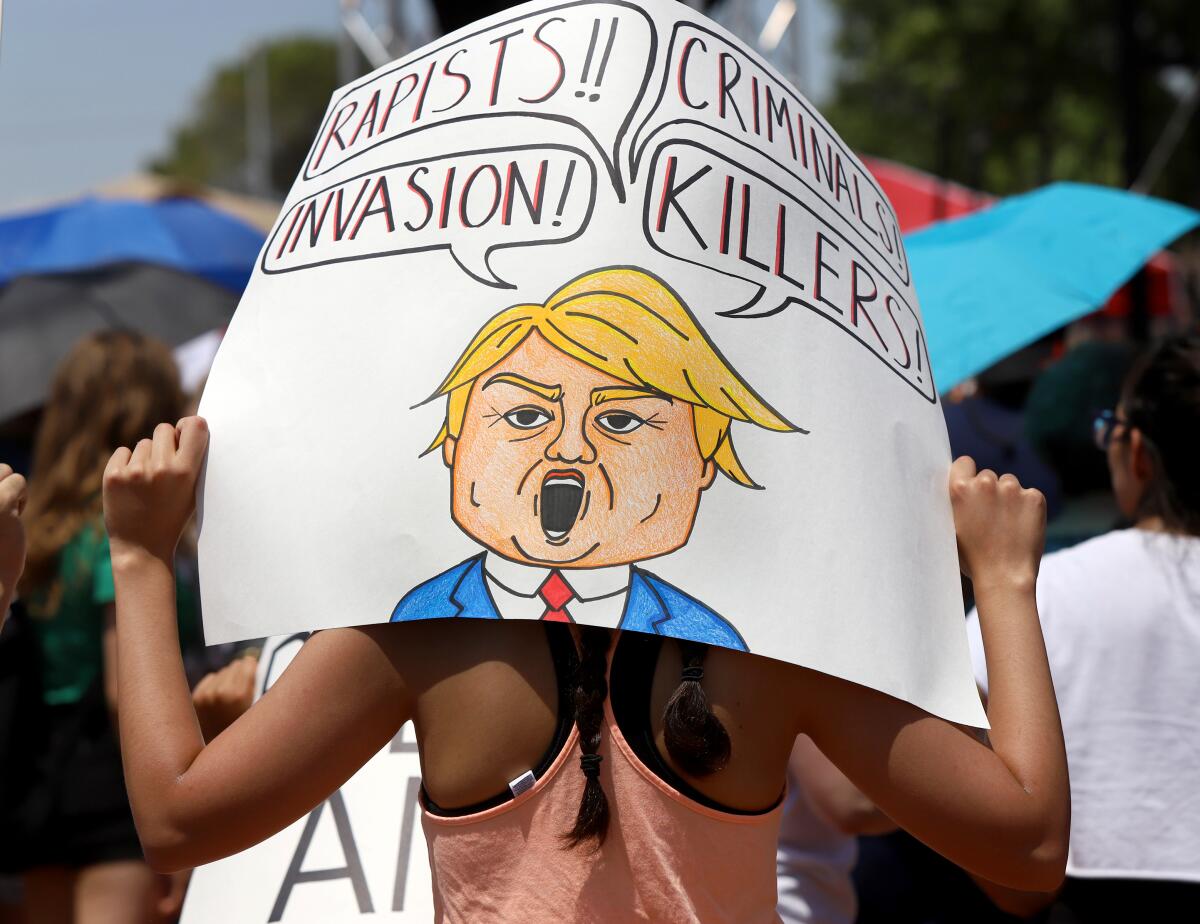
- Share via
In a public address at the White House the day after mass shootings in El Paso left 22 dead and more than two dozen wounded, President Trump described the shooter as a “wicked man.” He stated that “mental illness pulls the trigger, not the gun.” He denounced “gruesome and grisly video games.” He even said we “must condemn racism, bigotry and white supremacy” and that “hate has no place in America.”
Nowhere did the word “Latino” come up — despite the fact that the shooting has been called “one of the deadliest hate crimes ever against Latinos.”
When a reporter asked Trump a few days later if he regretted using the same language as the shooter — language that characterized illegal immigration as “an invasion” — the president responded: “I think that illegal immigration is a terrible thing for this country. ... We’re building a wall right now.” That same day, U.S. immigration officials raided several food processing plants in Mississippi, arresting 680 Latino workers there, and filling news reports with images of children crying for their arrested parents.
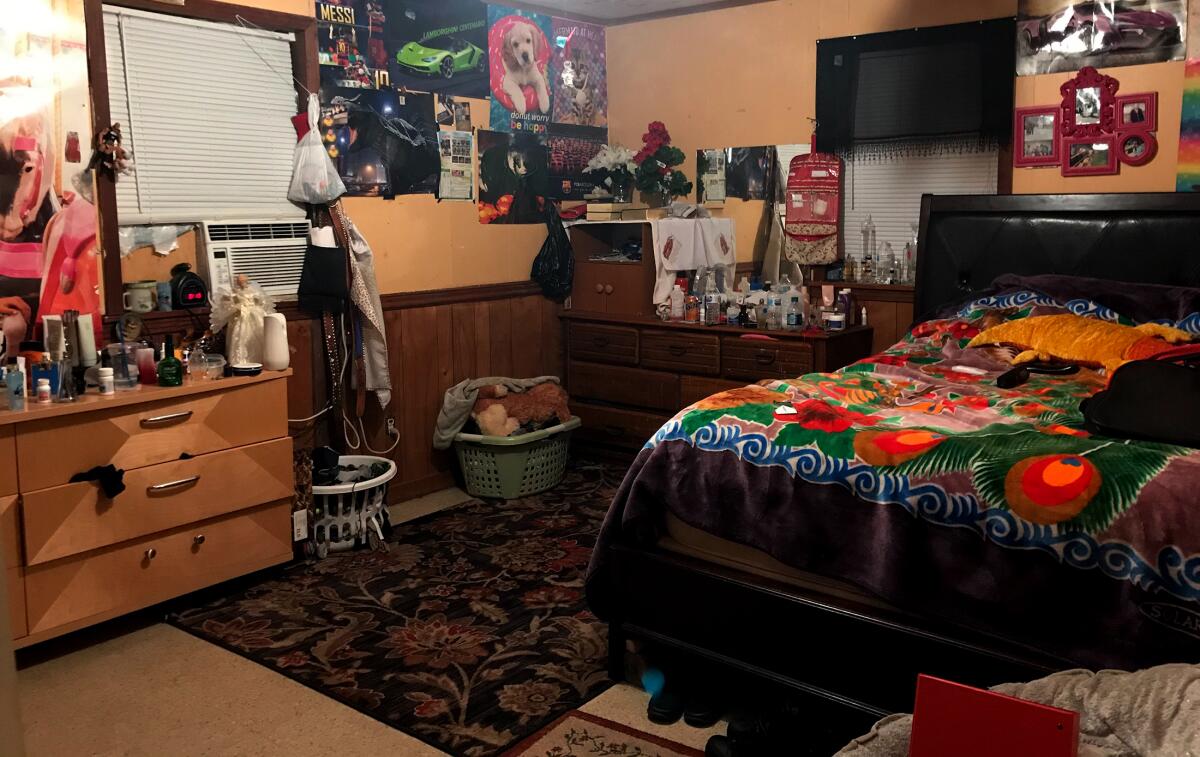
Since he launched his presidential campaign in 2015 by describing Mexican immigrants as “rapists,” Trump has put forth a narrative about Latinos that revels in vilification. It’s a narrative that has few counters — at least not on the scale of a sitting U.S. president and his bully pulpit.
“The major event that contributes to Trump denouncing Mexicans is the vast vacuum that exists, the lack of a multitude of representations of Chicanos and Chicanas,” Los Angeles conceptual artist Harry Gamboa Jr. told me last year when his photographic exhibition “Chicano Male Unbonded,” an exploration of the often menacing ways in which Chicano men have been represented, opened at the Autry Museum of the American West. “This allows people to insert negative ideas into the vacuum. And this justifies the mean-spirited behavior on behalf of our government.”
Those words have echoed in my head ever since.
Rendering an entire segment of the population invisible makes the cultural arena complicit in a marginalization that is entering increasingly dangerous territory.
Latinos represent almost one in every five Americans, yet remain vastly underrepresented in elected office and in journalism (a point that NPR’s Lourdes Navarro made to blazing effect in an essay about how the media has failed Latinos in the wake of El Paso).
Latinos also remain wildly elusive in the popular culture, the one area that could perhaps most effectively battle the stereotypes through the broadcast of a more accurate, nuanced or humane picture of Latino life to the American public. Or at least dot U.S. highways with billboards of a cape-wearing Latino saving humanity.
“People who don’t know Latinos, they go by what they see on screen or on television or the words of the president of the United States,” says Alex Nogales, president and chief executive of the National Hispanic Media Coalition. “If we are absent from mass media, the people believe the others — which, of course, is the president of the United States lamenting an ‘invasion.’ ”
If ever there were an urgent moment for the various culture industries — film studios, theater companies, art museums and TV production companies — to act on issues of diversity and inclusion, that moment is now. And not because diversity is some feel-good thing that makes for a nice talking point during Hispanic Heritage Month, but because rendering an entire segment of the population invisible makes the cultural arena complicit in a marginalization that is entering increasingly dangerous territory.
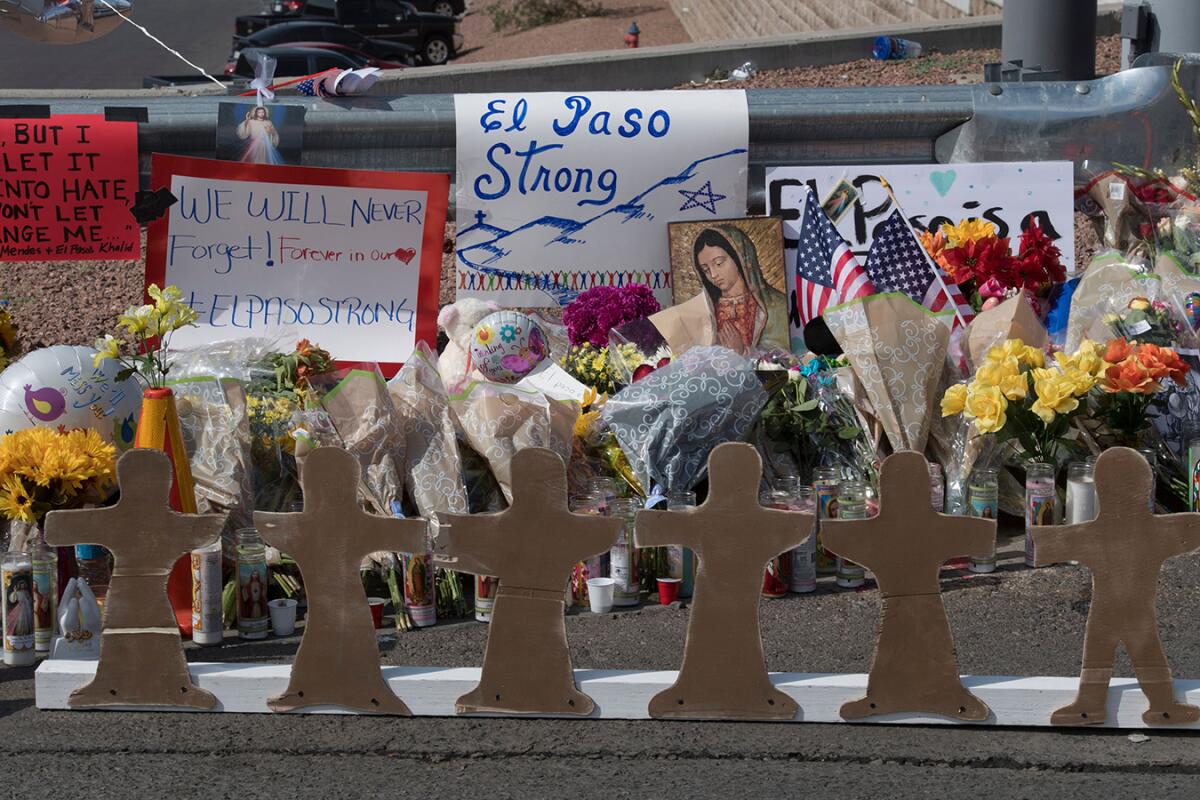
It is the mass media areas of culture — cinema and television — that have the most power to help fill that vacuum. And they seriously lag when it comes to issues of representation. Latinos account for more than 18% of the U.S. population (and almost 50% of L.A.’s population), yet they get only 5.2% of the top film roles and 6.2% of roles on scripted television shows, according to UCLA’s 2019 Hollywood Diversity Report.
As comedian Chris Rock noted in a searing essay in the Hollywood Reporter in 2014: “You’re in L.A., you’ve got to try not to hire Mexicans.”
Latinos still woefully underrepresented in Hollywood, with major movie portrayals remaining rare and stereotypical, USC study finds.
Representation is so weak, in fact, that sometimes the studies don’t even measure Latinos. An analysis of race and gender among film directors over a 12-year period, issued by USC’s Annenberg Inclusion Initiative in January, mentioned Latinos only in passing.
There have been breakthroughs. Disney’s 2017 animated hit “Coco,” inspired by the Mexican Day of the Dead, was centered on a Latino theme and featured a Latino cast and raked in more than $807 million worldwide. Last week, it was joined by Paramount’s live-action version of “Dora the Explorer,” titled “Dora and the Lost City of Gold,” which features Latinos in the five leading roles, including Eva Longoria and Michael Peña.
Yet depictions of U.S. Latino life, particularly the Mexican American experience, remain fleeting. Five of the last six Academy Awards for directing may have gone to three Mexican filmmakers (Alejandro González Iñárritu, Guillermo del Toro and Alfonso Cuarón), but only one of their films, last year’s “Roma,” featured Latinos in lead roles.
Gregory Nava, a writer and director who has produced key films on the Mexican American experience, including “Selena” and “My Family,” says securing financing and other resources for Latino stories is onerous.
“Every single film has been an incredible struggle — yet almost every film I’ve made has been a success,” he says. “‘My Family’ was a success; ‘Selena’ was a success. ... But every time you have to batter down the gates. Success is seen as a one-off. It’s like, when is the door going to stay open?”
On Sept. 15, Fathom Events will re-release a restored version of Nava’s most important picture: the Oscar-nominated “El Norte,” from 1983, which tells the story of a pair of indigenous siblings from Guatemala who, persecuted in their home country, make the grueling trip to the U.S., where they contend with racism and abuse.
Its themes could not be more timely.
“We are at a turning point in our community,” Nava says. “Our country needs to see our heart and soul, they need to see who we really are. That’s what films like ‘El Norte’ do. ... So much of what is seen is narcos, narcos, narcos.”
Certainly, when Latinos do get cast in films, it’s the stereotypes that surface.
The late actress Lupe Ontiveros once estimated she had played maids 150 times. Peña, who has done memorable turns as doomed DEA agent Enrique Camarena in Netflix’s “Narcos: Mexico” and the comedic sidekick Luis in the Marvel adaptation of “Ant-Man,” told my colleague Sonaiya Kelley in a recent interview that he had grown “sick of playing gangbangers.”
The problem in television is similar.
There are the occasional successes — such as the CW’s brilliant “Jane the Virgin,” which infused the situation comedy format with the tropes of the Latin American telenovela, creating a hybrid form of storytelling (something Emmy voters seemed perpetually unable to recognize).
But the program, which wrapped up its five-season run last month, is the lonely exception rather than the rule.
In March, Netflix announced it was canceling “One Day at a Time,” the Latino reboot of a 1970s Norman Lear sitcom, after three seasons. The show, set in Los Angeles, featured Justina Machado and Rita Moreno in the buoyant lead roles. For Latinos, its cancellation stung.
It was “a rare example of a television show about the United States-born children and grandchildren of Latin American immigrants,” film and television editor Vanessa Erazo of the website Remezcla wrote in a New York Times op-ed.
A show, in other words, about ordinary Americans who happen to be Latino. Americans who go to work, go to school, make dinner and have uncomfortable conversations with their kids about social media. Now they were gone — from a streaming service on which most of the shows connected with Latinos are international dramas about drug trafficking.
The fall TV lineup doesn’t offer much hope for immediate replacements. ABC will debut a family sitcom, “United We Fall,” about a mixed race white/Latino family, sometime in the 2019-20 season.
That leaves, for the time being, the soapy Latinx drama “Vida,” on the Starz network, as one of the lone bastions of representation on TV. In that regard, the show is groundbreaking — presenting characters of all ages, genders and sexual orientations, all of whom contend with everyday issues such as heartbreak, resentment and the messiness of life after the death of a loved one.
“We have been absent from the narrative for so long,” Tanya Saracho, “Vida’s” showrunner, told The Times in May. “And that is not a Hollywood thing. That is an American thing.”
The fine arts fare no differently.
A survey of solo exhibitions at 30 museums, published by ARTnews magazine this month, showed that out of 2,000 shows, only 5.5% featured Latin American or Latino artists. Moreover, a study this year by a group of statisticians and art historians, and published in the online journal Public Library of Science, a nonprofit, estimated that museum collections are 85% white and 87% male.
When the major institutions do get around to featuring Latino artists in career-making solo exhibitions, they tend to be established artists from Latin America. This sidelines Latinos who were born or raised in the U.S. and perhaps have something to say about that experience. It also sidelines the idea that Latinos might be integral to American art history.
In late 2017, nearly six dozen exhibitions devoted to Latino or Latin American art opened in museums around Southern California as part of the Getty-funded Pacific Standard Time: LA /LA series — exploring topics such as Chicano muralism and Latin American feminist art. The cross-border cooperation (institutions, curators and writers from across Latin America contributed) served as a cultural counterpoint to the rising anti-Latino xenophobia of the Trump administration, then in its first year.
But everyday representation remains weak — particularly that of Mexican American artists. The last time a Chicano artist was the subject of a solo show at one of the major museums in L.A. was in 2017, when the Los Angeles County Museum of Art staged an exhibition of work by the late painter Carlos Almaraz as part of Pacific Standard Time.
If the Hammer Museum or the Museum of Contemporary Art Los Angeles has given a solo show to a Chicano artist in the last decade, I have been unable to find any evidence of it. (Though, MOCA came close in 2013, when it showed an installation by L.A. graffiti artist RETNA, who is half Salvadoran.)
This is, I repeat, in half-Latino Los Angeles.

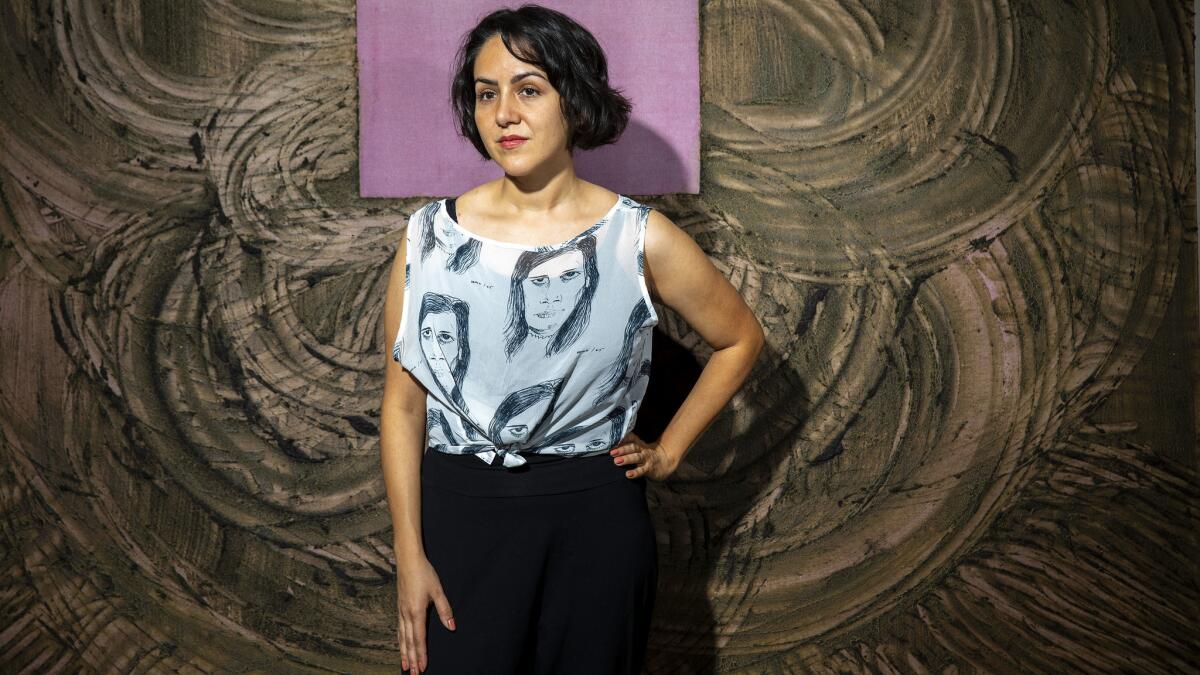
Artist Carmen Argote was born in Mexico but raised in the United States. Her works, which have tackled topics such as notions of home, have been displayed at LACMA, and in September, she will have a solo exhibition at the New Museum in New York — making her, in all likelihood, the first Mexican American artist to get a solo exhibition there.
Argote says it is important for museums not simply to present Latino art but to present a wide range of art by Latinos, to reflect the diversity of ideas and experience.
“It’s important to me to see the complexity — not necessarily stories that are exactly like mine,” she says, “[but] the different ways that different people navigate the landscape in the United States. ... Those perspectives, very often, it’s flattened.”
And, very often, it’s not there at all. Which allows Trump to tell the story of Mexican Americans instead.
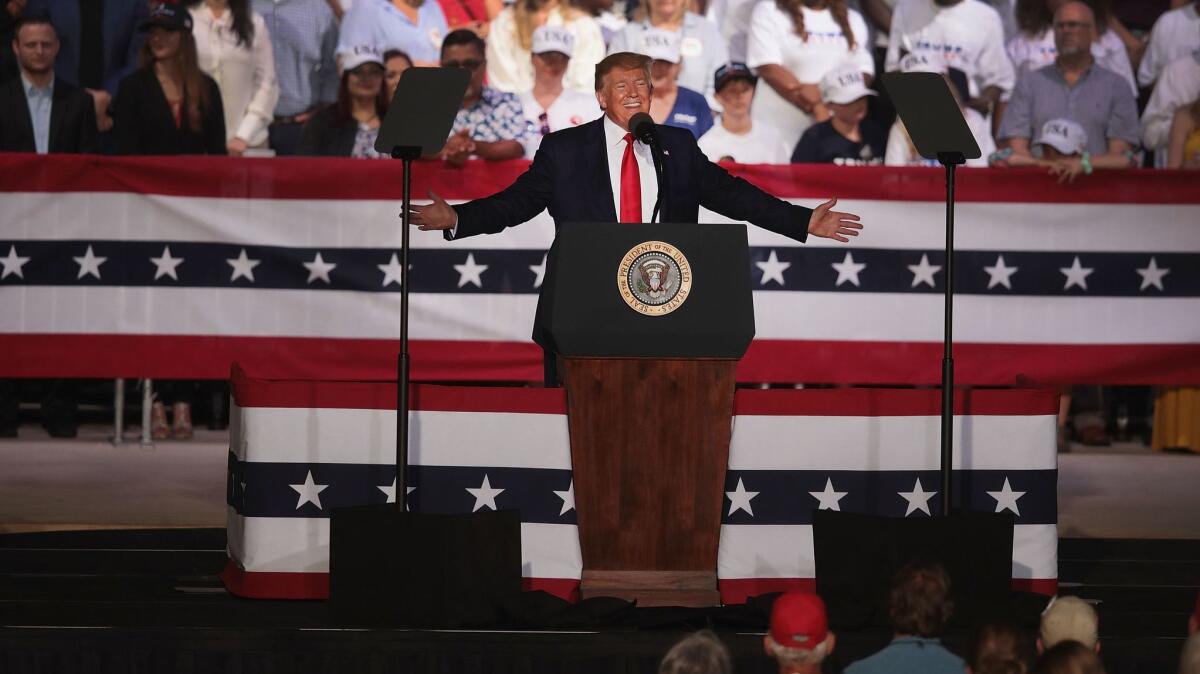
Several years ago, Los Angeles playwright Luis Alfaro, a MacArthur fellow who teaches at USC, attended a conference about immigration organized by the Latin Policy Forum, a nonprofit group based in Chicago.
“I remember [Sen.] Dick Durbin saying, ‘We’re not going to have immigration reform until we see them as a people and not as a number,’ ” says Alfaro. “That’s the one thing I’m trying to do in theater, which is to put humanity to a number.”
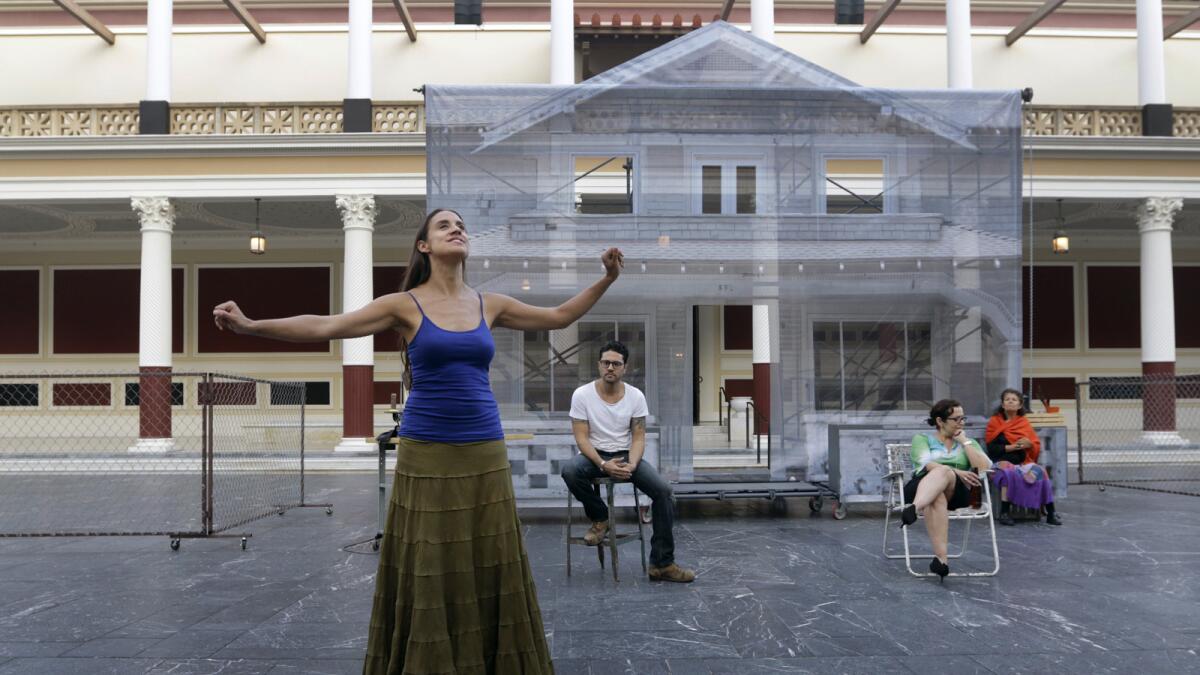
The statistics of Latino representation in theater mirror the stats elsewhere. Latinos received a paltry 3.5% of acting roles in Broadway plays or musicals in the 2014-15 season, according to a study conducted by the Asian American Performers Action Coalition.
The study was conducted before Lin-Manuel Miranda’s smash musical “Hamilton” opened on Broadway — a work that helped Broadway rethink the nature of casting by placing Latino and African American actors in roles that would have traditionally gone to white actors. One musical, however, cannot make up for all the inequity.
In 2015, Alfaro staged his play “Mojada: A Medea in Los Angeles” at the Getty Villa, a work that re-imagined Euripides’ tragedy “Medea” as the tale of a Mexican immigrant who carries with her untold traumas on her journey to the U.S. A version of it is being performed at the Public Theater in New York.
“Every theater I go to, I tell them I want to write an American story about people who wake up every day and go to work and do things like go to the mall, and they happen to be Latino,” he says.
“That’s what the theater allows us in some way,” he adds. “It’s not mass production. It allows us to tell single stories. This thing that we are seen as faceless people, we can be seen as individuals.”
It is one story — a counter. In the wake of El Paso, we need thousands.
More to Read
The biggest entertainment stories
Get our big stories about Hollywood, film, television, music, arts, culture and more right in your inbox as soon as they publish.
You may occasionally receive promotional content from the Los Angeles Times.











